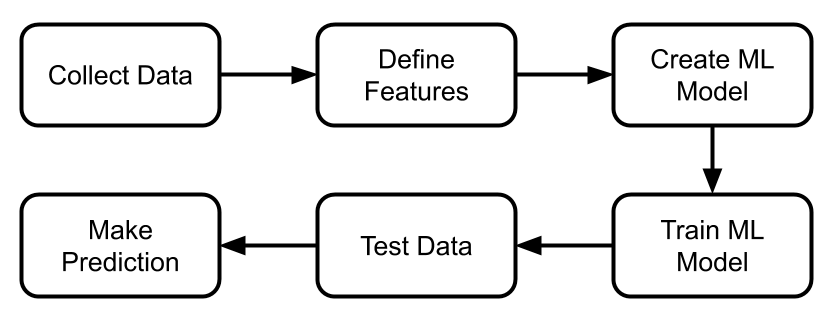Machine Learning and Deep Learning are components of Artificial Intelligence. Technology companies are utilizing these technologies to offer the best solution to their customers. But sometimes people use these words interchangeably. In reality “Deep Learning” is a subset of “Machine Learning”. In this article, we will discuss the difference between Machine Learning vs Deep Learning.
What is Machine Learning?
In machine learning, a computer program/machine can learn and improve by its own experience. ML is used to analyze, understand and identify a pattern in data.
It is a subset of artificial intelligence that provides system capability to learn from his own experience. We suggest you also read this article on the applications of machine learning in manufacturing.

Machine Learning Process
In Machine learning, features are defined manually to train the machine learning model. Definition of features involves manual work, which is prone to error.
When you are building an ML program to recognize and compare between car and bicycle. The first process is to identify car and bike unique features. For example, the number of tires in a car and bicycle is a feature. We can use this feature to recognize whether the image in consideration is a car or bicycle. Based on these features ML algorithm will identify a pattern during training.

Step-1: Define the Features
To identify and compare bicycles and cars, Firstly we need to identify their unique features. For example, cars can have the following unique features.
- Four-Number of Tires
- Length more than 4 meters
- Width more than 1.5 meters
- Front Bumper
- Rear Bumper
- Side doors
Step-2: Create Machine Learning Model / Algorithm
The next step is to create ML models using defined features. Each type of part you want to identify will have a different ML model. For example, if you have three different product categories such as cars, bicycles, trucks, etc. You require three different feature sets.
Depending on the type of available data, Here are the three types of Machine Learning algorithms.
- Supervised Learning
- Unsupervised Learning
- Reinforcement Learning.
Step-3 Train Machine Learning Algorithm
Structured and labeled data is used by some of the Machine Learning algorithms to train the model. Training improves the accuracy of ML algorithms. Availability of high-quality training data ensures more accuracy in predictions.
Step-4 Test Machine Learning model
Initially, the ML algorithm is tested using known unlabeled data to determine the accuracy of the model. It is required to ensure the ML model is working as expected. If results are not as per expectation, the ML model is modified.
What is Deep Learning?
Deep learning is a branch of machine learning inspired by the functionality of the human brain called neurons. In deep learning, artificial neural networks similar to human neurons are used for learning and predictions.
All information in Deep Learning algorithms passes through these artificial neural networks. The ultimate goal of deep learning is to make machines think like humans. For example, self-driving cars utilize deep learning technology to predict and make decisions.

Deep Learning Process
A manual definition of the features is not required to train deep learning algorithms. They create unique features and models of their own. To train deep learning models, we only need to provide a lot of labeled data.

For example, to train a Deep Learning model to identify cars or bicycles. You need to upload labeled images of the bicycles and cars. A deep learning algorithm will create the model and features on its own.
Difference between Machine Learning and Deep Learning
Deep learning is a subset of machine learning. In Machine Learning, users need to define the features in the available data. Whereas in deep learning, deep learning algorithms identify data features by themselves. Therefore chances of error in deep learning are less.
Machine Learning vs Deep Learning
| Description | Machine Learning | Deep Learning |
|---|---|---|
| Definition | In this, computer program/machine can learn and improve by its own experience. | Inspired by the structure and the function of human brain. learning and predictions are done in artificial neural networks. |
| Scope | Broader Term | Subset of Machine Learning |
| Labeled Features | Features are defined manually. Therefore chances of error are high. | Features are defined by the deep learning algorithm itself. |
| Data Requirements | Small and medium data sets are enough to train ML algorithms. | Lots of labeled data is required to train deep learning algorithms. |
| Computing Requirements | Can work on low-end machine | Requires high computing power. |
| Training Time | Few minutes to hours. | Few weeks to months. |
| Accuracy | Good | Best |
| Development Cost | Low | High |
| Applications | E-Mail Spam Detection, Fraud Detection, Stock Market Prediction | Amazon product suggestions, Facebook feeds, Google adds, Self Driving Car |
We will keep adding more updates to Machine Learning vs Deep Learning. Add your comments or questions to What is the difference between Machine Learning and deep learning.

Add a Comment